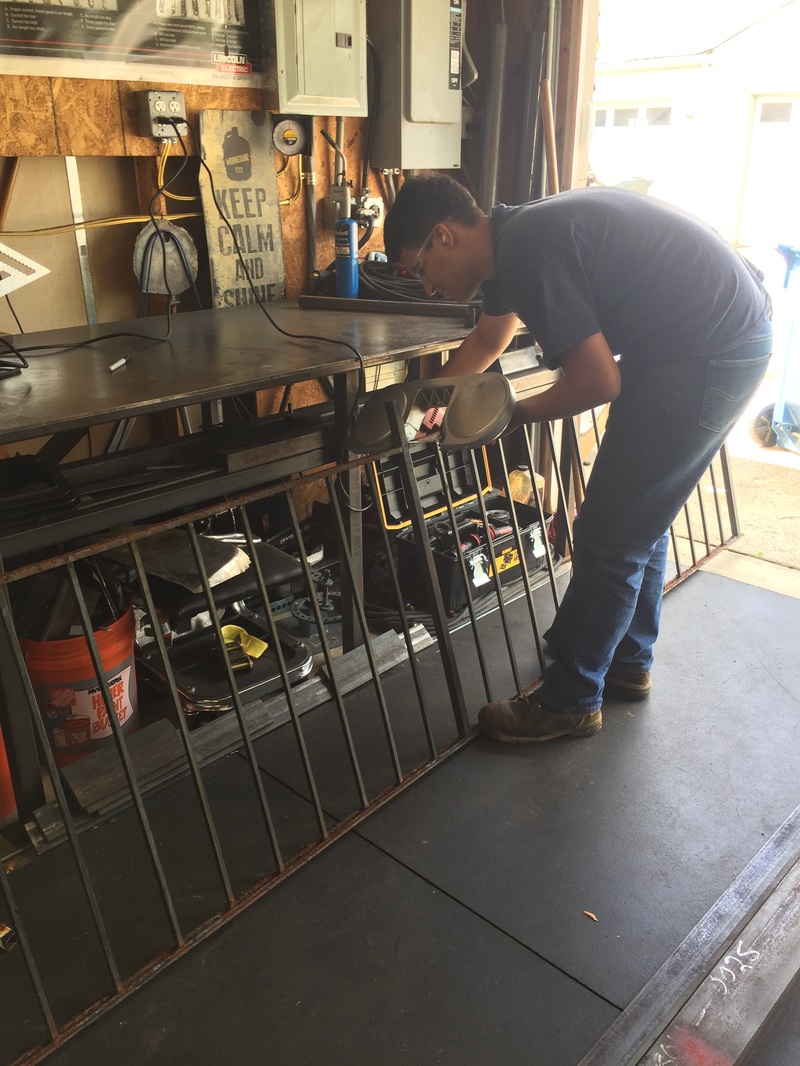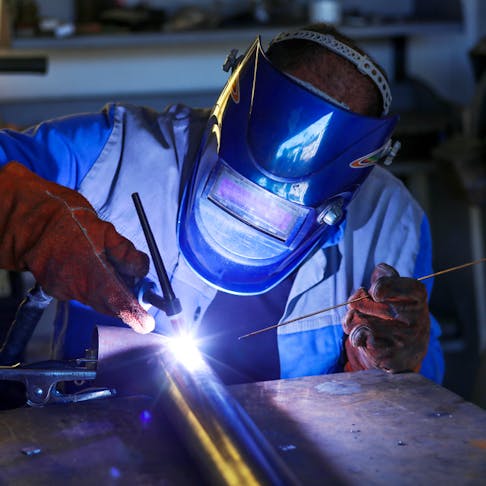Quick tips for poor fusion from Montana Mobile Welding and Repair
Everything about Welding: Secret Insights Into Techniques and Finest Practices for Success
Welding incorporates a selection of techniques, each matched for particular materials and applications. Understanding these techniques, such as GMAW, SMAW, and TIG, is crucial for achieving suitable outcomes. The ideal devices and safety methods can not be overlooked. As preparation and troubleshooting play crucial duties in the welding procedure, grasping these elements can significantly improve the high quality of the final item. What are the key variables that guarantee a successful weld?
Recognizing Various Welding Methods
Welding techniques encompass a variety of methods, each matched to certain applications and materials. Among one of the most usual strategies are Gas Steel Arc Welding (GMAW), Shielded Metal Arc Welding (SMAW), and Tungsten Inert Gas Welding (TIG) GMAW, likewise called MIG welding, is preferred for its rate and adaptability, making it excellent for thin products. SMAW, or stick welding, is favored for its simpleness and effectiveness in exterior settings, specifically with thicker metals. TIG welding offers accuracy and control, making it ideal for elaborate job and non-ferrous steels (Belgrade Welding). Each method has its one-of-a-kind advantages and considerations, enabling welders to choose the very best technique based on the job's needs, product kind, and wanted outcomes. Comprehending these methods is important for successful welding
Essential Welding Devices and Tools
While numerous welding methods need certain abilities, the ideal devices and tools are just as vital for achieving high quality results. Important welding devices consists of welding equipments, which differ depending on the technique-- such as MIG, TIG, or stick welding. Protective equipment, consisting of aprons, headgears, and handwear covers, warranties security and convenience during the procedure. In enhancement, fixtures and clamps aid safeguard products in place, ensuring accuracy in welds. Consumables like welding rods, cable, and protecting gas are additionally essential components that influence the high quality of the weld. In addition, devices such as cutters and mills facilitate surface area preparation and post-weld finishing, adding to a professional outcome. Buying high-grade tools eventually enhances the efficiency and efficiency of welding projects.
Security Practices in Welding
Appropriate security techniques are vital in the welding market to secure workers from potential threats. Welders have to wear ideal personal protective devices (PPE), consisting of helmets with appropriate shading, handwear covers, and flame-resistant clothing. Appropriate ventilation is vital to minimize exposure to damaging fumes and gases created throughout the welding process. Furthermore, employees ought to be trained in the appropriate handling of welding devices to avoid mishaps. Fire precaution, such as maintaining combustible products away from the welding location and having fire extinguishers conveniently offered, are needed. Normal assessments of equipment and workspaces can help determine potential threats prior to they lead to mishaps. By adhering to these safety techniques, welders can produce a more secure working atmosphere and reduce threats related to their profession.
Preparing Materials for Welding
Preparing products for welding is a crucial action that greatly affects the high quality and stability of the end product (Belgrade). Correct preparation involves cleaning the surfaces to remove pollutants such as oil, dust, and rust, which can jeopardize the weld. Strategies such as grinding, sanding, or using solvents are frequently employed to attain a clean surface. In addition, making sure that the products mesh well is necessary; gaps can bring about weak welds. It's also essential to consider the positioning and positioning of the parts, as this will impact the convenience of welding and the last result. Lastly, choosing the appropriate filler material and making sure compatibility with the base steels is necessary for accomplishing strong, sturdy welds
Tips for Getting High-Quality Welds
Achieving high-quality welds needs attention to detail and adherence to best techniques throughout the welding procedure. Proper joint preparation is important, making certain surfaces are clean and cost-free from pollutants. Selecting the appropriate filler product and welding method based upon the base metals is vital for ideal bonding. Maintaining constant traveling speed and angle while welding can prevent problems and advertise harmony. Furthermore, managing warm input is vital; excessive warm can cause warping and compromised joints. If needed, consistently inspecting the welds during the process enables for prompt adjustments. Lastly, utilizing ideal post-weld therapies, such as cleaning and stress and anxiety relief, can enhance the longevity and stability of the weld, eventually making certain an effective outcome.
Repairing Common Welding Issues
Welding usually presents challenges that can influence the high quality and stability of the last item. Typical issues such as porosity, irregular weld grains, and overheating can occur, each calling for details troubleshooting methods. Understanding these troubles is crucial for welders to improve their abilities and attain ideal results.
Porosity Troubles Discussed
Although porosity can commonly be overlooked, it stays an important issue in welding that can compromise the honesty of a completed product. Porosity describes the presence of little gas pockets within the weld grain, which can weaken the joint and lead to premature failing. This problem usually occurs from contaminants, moisture, or incorrect protecting gas coverage during the welding procedure. To minimize porosity, welders need to verify that the base materials are clean and dry, make use of appropriate shielding gases, and preserve constant welding specifications. Consistently evaluating the devices and atmosphere can likewise help determine possible issues before they manifest in the weld. Dealing with porosity successfully is necessary for accomplishing strong, resilient welds that meet high quality requirements.

Inconsistent Weld Beans
Inconsistent weld grains can substantially impact the top quality and strength of an ended up item. Various elements contribute to this issue, including improper travel rate, wrong amperage settings, and inconsistent electrode angles. When the welder relocates too quickly, a grain may appear narrow and lack penetration, while moving Check This Out too gradually can trigger too much accumulation. Furthermore, making use of the incorrect amperage can cause either damaging or too much spatter, both of which concession weld stability. The welder's method, such as inconsistent torch activity, can likewise result in unequal bead appearance. To alleviate these issues, welders should concentrate on keeping steady, regulated activities and making certain correct equipment settings to achieve uniformity in their welds. Uniformity is key to accomplishing dependable and solid welds.
Getting Too Hot and Bending Issues
Extreme heat throughout the welding process can cause substantial overheating and contorting concerns, influencing the architectural integrity of the work surface. These problems typically show up as distortion, which can endanger positioning and fit-up, making further setting up testing. Aspects adding to overheating include the option of welding criteria, such as voltage and travel speed, as well as the kind of product being welded. To mitigate these issues, welders must preserve constant travel rate and appropriate warm input while checking the work surface temperature. Furthermore, preheating or post-weld warm treatment can help minimize tensions caused by fast cooling - Montana Mobile Welding and Repair Belgrade. Regular inspection and adherence to ideal methods are vital in avoiding getting too hot and making certain the longevity and integrity of welded structures
Often Asked Concerns
What Are the Career Opportunities in the Welding Sector?
The welding sector provides diverse profession possibilities, consisting of positions as welders, designers, teachers, and inspectors. Experts can work in production, construction, aerospace, and auto sectors, gaining from strong need and affordable wages in numerous functions.
Just How Can I Improve My Welding Speed Without Giving Up Quality?
To improve welding speed without sacrificing quality, one must practice reliable methods, preserve devices, enhance setups, and enhance hand-eye sychronisation. Regular training and looking for comments can also considerably contribute to attaining quicker, top quality welds.
What Certifications Are Available for Welders?
Various qualifications exist for welders, Recommended Site including those from the American Welding Society (AWS), the National Center for Building And Construction Education And Learning and Research Study (NCCER), and various industry-specific companies. These credentials improve employability and demonstrate skill efficiency.
Exactly How Does Welding Affect the Properties of Metals?
Welding affects the properties of metals by altering their microstructure, which can bring about modifications in ductility, firmness, and toughness. Warm input and air conditioning prices throughout the process greatly affect these material characteristics.
Can I Bonded Dissimilar Metals With Each Other?
